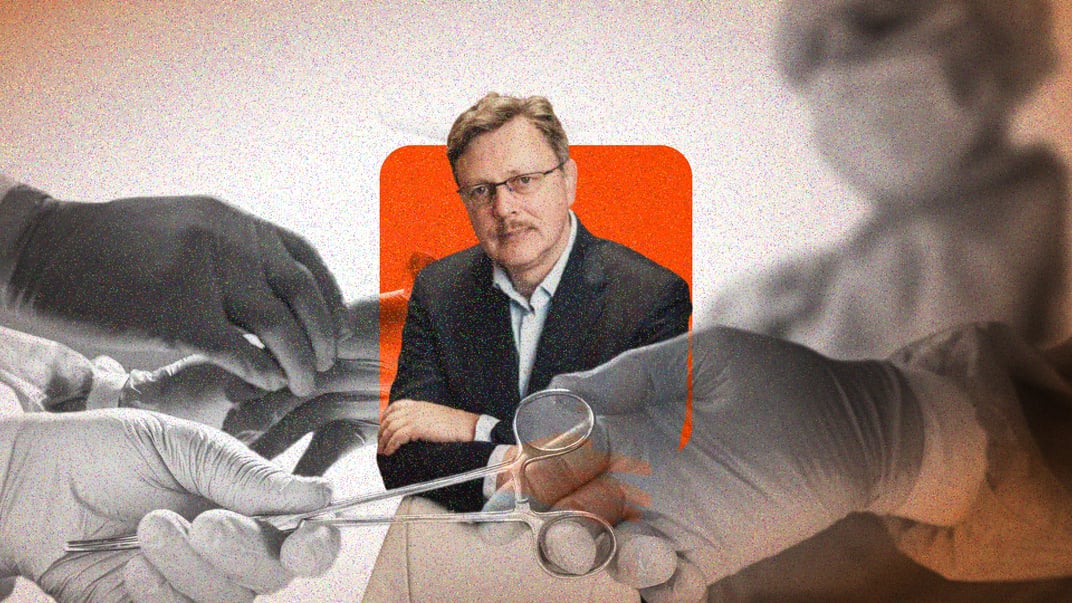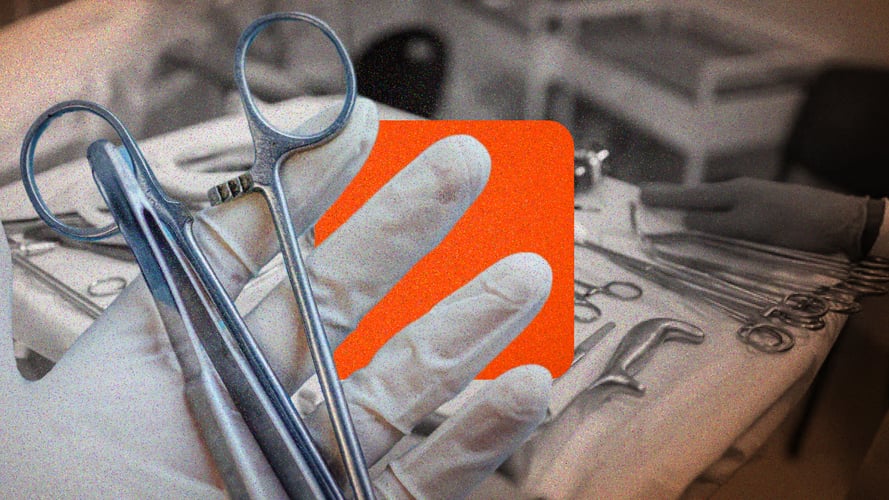Surgery of hope: how plastic surgeons assist soldiers in reclaiming their lives.

Antiquity: Cut Off Noses
The first plastic surgeries were performed in Ancient Egypt and India.
There is a treatise written over 1,500 years before our era, in which the Egyptians detailed how to treat injuries. Interestingly, 30% of the treatise dealt with the absence of a nose. It turns out that in those times, to psychologically destroy a person, they would cut off their nose. This punishment was meted out for various crimes, including adultery.
As a result, the restoration of noses was in high demand. Ancient Indian rhinoplasty involved transplanting skin from the forehead or cheek onto the damaged nose. The doctor would cut out a small flap of skin, leaving a "pedicle." Then he would flip it over and place it on the damaged nose. The flap would receive nourishment from the vessels in the "pedicle" until it became integrated into its new location.
In the book by British historian Arthur Beche, “The Miracle That Was India,” it is noted: “The plastic surgeries performed by ancient Indian doctors are particularly noteworthy—they knew how to restore noses, ears, and lips that had been lost or mutilated in battle or by court order. In this field, Indian surgery was ahead of European practices until the 18th century, when surgeons from the East India Company did not find it degrading to learn the art of rhinoplasty from the Indians.”
In the 15th and 16th centuries, Italian surgeons employed a similar Indian method. To form a nose, they would take skin from the arm rather than the forehead or cheek. The patient had to keep their arm next to their head for 15-20 days! Only after that could the "pedicle" be severed.

“Both methods are perfectly suitable for our time. I have tried both, but the Indian method is better because walking with an elevated arm is long and uncomfortable. The Indian technique is considered the gold standard. Indians are generally advanced: they used both flax threads and animal tendons,” says Dmitry Slosser.
According to him, the church long rejected plastic surgery. It was believed that a person was as they are by divine will, so there was no need to change them. Because of this, for instance, in Italy, surgeons were considered criminals and buried on unholy ground alongside suicides.
The situation changed when in the 20th century, Pope Pius XII stated that he approved of plastic surgery because it heals not just the body but also the soul.
20th Century Wars: Prosthetic Masks and Drug-addicted Patients
In the last century, World War I and II left many young soldiers with disfigured faces. Shrapnel turned them into bloody messes. Due to the horrific injuries, many wounded soldiers resorted to suicide.
However, every war spurs advancements in medicine. The leading surgeon of World War I, New Zealander Harold Gillies, through trial and error, sought a way to combine functionality and aesthetics. He stated that a doctor with a scalpel should resemble a sculptor rather than a plumber.
Things progressed slowly in his time, considering that antibiotics had not yet been invented, and opium was used for pain relief. This made some patients dependent on narcotics. Nevertheless, during the military campaign, Gillies performed over 11,000 surgeries and became such a professional that he sometimes had to prove that the perfect noses he created were real and not prosthetic. This was due to the rising popularity of masks that accurately reproduced facial features, crafted by sculptors for the wounded.
“When I look at the results of this surgeon’s plastic surgery, I consider them magnificent. And it’s been over a hundred years! Many modern plastic surgeons in Ukraine would be happy to achieve such a good aesthetic effect,” notes Dmitry Slosser.
Severe injuries, frostbite, burns, fractures, and nerve damage sustained by soldiers during World War II prompted the transition of plastic surgery into a distinct medical specialty. From 1940 to the 1970s, a vast number of unique methods for plastic correction were developed in the USA and Europe.
In the former USSR, until the 1990s, there was no separate specialty of "plastic surgeon." There were beauty institutes of sorts that treated skin deficiencies. Regular surgeons could perform operations to reduce the abdomen. Rhinoplasty (for nasal fractures and congenital defects like protruding ears) was handled by ENT doctors.
Can Shape Both Ear and Nose
Dmitry Slosser graduated from Lviv Medical Institute with a specialization in "Surgery." He received his training as a plastic surgeon in Israel in the early 2000s.
“When I returned to Kyiv, I approached a well-known plastic surgeon and said, ‘I want to work in the capital, but I have an offer to go to Moscow.’ He replied, ‘Let’s go to Moscow; it’s better there.’ Later, I realized he wanted to get rid of a competitor. Thus, I got stuck in Russia for 12 years.”
In the midst of the Revolution of Dignity, Slosser returned to Ukraine out of a sense of duty. He performs surgeries that enhance appearance. He is invited as an expert on television projects such as “Return My Beauty,” “I Am Ashamed of My Body,” “Ukraine Speaks,” and others. At the same time, he engages in reconstructive surgery, particularly ear reconstruction. These are unique operations that only about 100-120 specialists worldwide can perform.
Slosser was the first in Ukraine to perform ear reconstruction using a Japanese method that yields the best aesthetic results. He cut a frame (scaffold) for the ear from four ribs.
“I was fond of wood carving as a child. It’s similar,” jokes the doctor.
The frame was placed under the skin, and the patient wore it for six months while their ear formed. Then the frame was removed.
Over time, Slosser also specialized in nose reconstruction. Among approximately 200 plastic surgeons in Ukraine, he had the most experience in this area. Before the full-scale war, Slosser primarily restored noses with congenital defects or those bitten off by dogs. However, thanks to the experience he gained in Israel, he was also able to operate on military injuries.
“I had good practice in that country,” he says. “There are no military hospitals—there are hospitals where both deputies and homeless people and soldiers are operated on. In other words, various patients were admitted. Moreover, I was there when buses were blown up during terrorist attacks, and the wounded with combat injuries were brought directly to us.”
“I encountered such a variety of injuries that it gave me an edge over my colleagues in Ukraine after the full-scale invasion. They knew how to perform specific aesthetic surgeries, but unfortunately, not reconstructive ones. And I decided to use my knowledge to help our military.”
How to Create Something from Nothing
Slosser notes that the current Russian-Ukrainian war differs from others in the nature of the injuries. The wounds are more traumatic, requiring more complex treatment and extended recovery periods.
“If there is a combined injury, the first priority is to save the life. This is handled by surgeons and traumatologists. Plastic surgeons come into play at the end because plastic surgery is not the most necessary thing, though it is psychologically important. This happens a year after the injury. That’s why at the beginning of the large war, we performed fewer surgeries, but now there is certainly one operation a week,” explains Dmitry Slosser, working at the Nove Tilo aesthetic surgery clinic in Kyiv.
Military personnel with nose injuries are mainly referred to him by colleagues. However, there are also those who reach out directly on their own. Surgeries that cost $25,000-30,000 abroad are performed free of charge for soldiers. The clinic covers these expenses from profits made through regular aesthetic surgeries.
Rhinoplasty occurs in several stages (which can be 6-7) with intervals of several months. Surgeons need to create the nose's framework (cartilage taken from ribs or ears), line the internal mucosa, and cover it with skin (taken from the forehead).
“It’s easier to make something smaller from something larger, but making something larger from something smaller (or when it’s completely absent) is challenging,” Dmitry sighs and shows photos of patients before surgery.
There are noses that have been completely scraped away by debris. In the post-surgery, healing, and recovery photos, noses appear on faces as if by miracle. According to the plastic surgeon, it is impossible to fully restore the nose to what it was before the injury. However, specialists strive to make it as similar as possible.
“The main thing is that the nose does not draw attention, does not stand out, and functions well